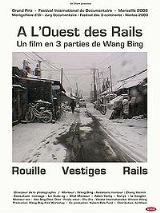
Tie Xi Qu: West of the Tracks
Encyclopedia
Tie Xi Qu: West of the Tracks is a Chinese
Cinema of China
The Chinese-language cinema has three distinct historical threads: Cinema of Hong Kong, Cinema of China, and Cinema of Taiwan. Since 1949 the cinema of mainland China has operated under restrictions imposed by the Communist Party of China's State Administration of Radio, Film, and Television and...
documentary film
Documentary film
Documentary films constitute a broad category of nonfictional motion pictures intended to document some aspect of reality, primarily for the purposes of instruction or maintaining a historical record...
by Wang Bing
Wang Bing (director)
Wang Bing is a Chinese director, often referred to as one of the foremost figures in documentary film-making. Wang is the founder of his own production company, Wang Bing Studios, which produces most of his films...
. Over 9 hours long, the film consists of three parts, "Rust," "Remnants" and "Rails."
Tie Xi Qu was filmed over the course of two years between 1999 and 2001 and details the slow decline of Shenyang
Shenyang
Shenyang , or Mukden , is the capital and largest city of Liaoning Province in Northeast China. Currently holding sub-provincial administrative status, the city was once known as Shengjing or Fengtianfu...
's industrial Tiexi district, an area that was once a vibrant example of China's socialist economy. With the move towards other industries, however, the factories of Tiexi have all begun to be closed down, and with them, much of the district's worker-based infrastructure and social constructs.
The English subtitle "West of the Tracks" is a literal translation of "Tiexi."

